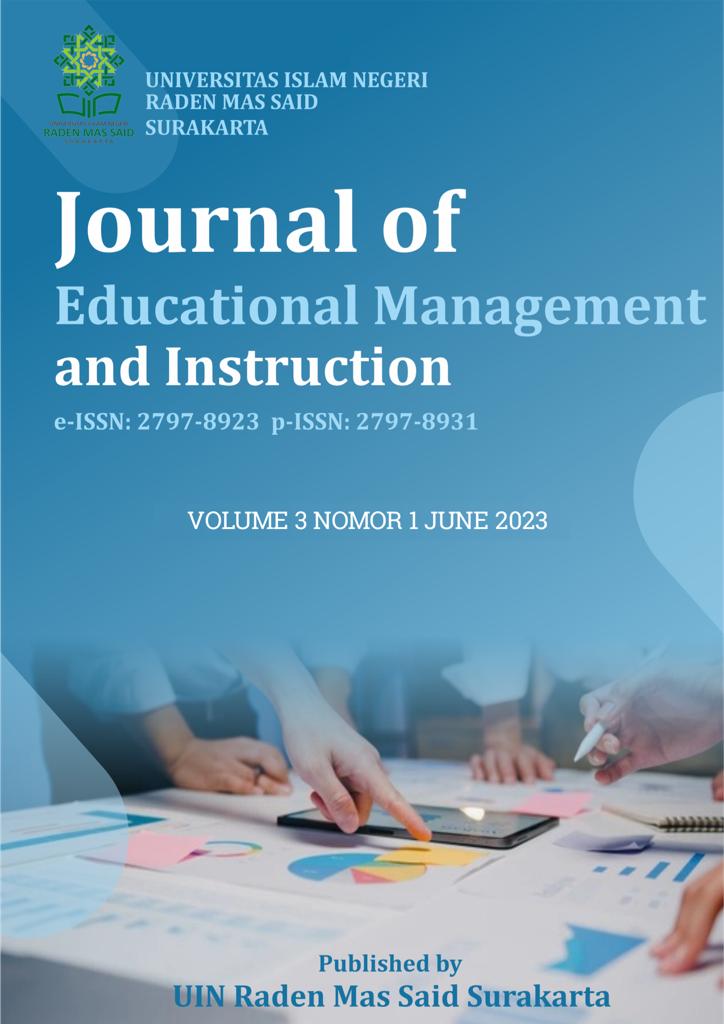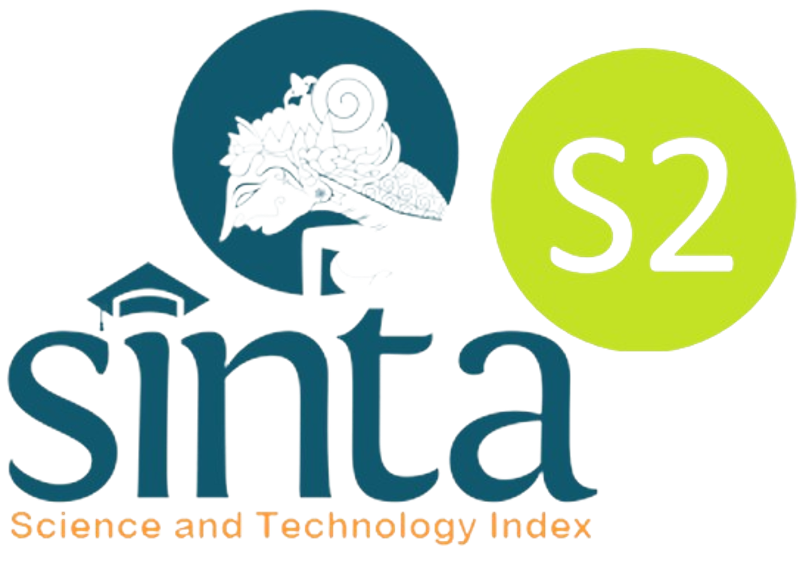Discipline as a determinant of school performance: A case of junior high school in Namibia
DOI:
https://doi.org/10.22515/jemin.v3i1.7360Keywords:
discipline, education character, school performance , junior secondary in NamibiaAbstract
Successful teaching and learning can only take place in schools when there is positive discipline. Lack of discipline is called indiscipline. Thus, indiscipline can be regarded as any learners’ action that is deemed to be wrong and not generally accepted as proper in a set up or society. This shows that discipline is critical for learners ‘good academic performance. Therefore, this study was conducted to investigate how discipline enables academic performance in Junior Secondary Schools at Katjinakatji Circuit in the Kavango West region, Namibia. The study aimed to determine the causes of indiscipline, assess how discipline enables academic performance and find measures school administrators can use to deal with indiscipline among learners. The study used a mixed research method to collect data from 48 participants comprises of,3 Principals, 15 teachers and 30learnerswho are currently teaching and schooling at the three selected Junior Secondary Schools in the study area. Participants were selected using simple random sampling and purposive sampling methods. Data was collected using questionnaires and interview guides. The study established that negligent parents contributed to indiscipline in the Katjinakatji circuit. Results show that disciplined learners are likely to perform better, unlike indiscipline learners. Measures to be taken by school administrators to ensure discipline are time management, punishment, and reinforcement of school rules and regulations.
Downloads
References
Ali, A. A., Dada, I. T., Isiaka, G. A., & Salmon, S. A. (2014). Types, causes and management of indiscipline acts among secondary school learners in Shomolu Local Government Area of Lagos State. Journal of Studies in Social Sciences, 8(2), 254-287. https://infinitypress.info/index.php/jsss/article/view/790
Antonio, M. K. (2017). Evaluating policy implementation of discipline from within in selected secondary schools in Oshana region of Namibia (Doctoral dissertation, University of Namibia).
Belle, L. J. (2018). Learners Discipline Management: An Examination of the State Secondary. International Research in Education, 6(1), 30-49. https://doi.org/10.5296/ire.v6i1.12271
Bodovski, K., Nahum-Shani, I. & Walsh, R. (2013). School disciplinary climate and learners’ early mathematics learning: Another search for contextual effects? American Journal of Education, 119 (2), 209-234. http://eric.ed.gov/?id=EJ1003815
Cains, R. B. &Cains, B. D. (1994). Life Lines and Risks; Pathways of Youth in our Time. New York: Cambridge University Press.
Cresswell, T. (2014). Place: an introduction. John Wiley & Sons.
Creswell, J. W., & Creswell, J. D. (2017). Research design: Qualitative, quantitative, and mixed methods approach. Sage publications.
Cohen, L., Manion, L., Morrison, K., & Wyse, D. (2010). A guide to teaching practice. Routledge.
Dawo, A. J. -I., &Simatwa, E. M. W. (2010). Opportunities and challenges for mixed day secondary school head teachers in promoting girl-child education in Kenya: A case study of Kisumu Municipality. Educational Research and Review, 5(1), 730-741.
Duckworth, A. L., & Seligman, M. E. P. (2006). Self-discipline gives girls the edge: Gender in self-discipline, grades, and achievement test scores. Journal of Educational Psychology, 98(1), 198-208. https://doi.org/10.1037/0022-0663.98.1.198
Ehiane, O. S. (2014). Discipline and academic performance (a study of selected secondary schools in Lagos, Nigeria). International Journal of Academic Research in Progressive Education and Development, 3(1), 181 – 194. http://hrmars.com/hrmars_papers/Discipline_and_Academic_Performance.pdf
Etyang, P. P., & Okoth, U. (2018). Class Teachers’ Role in Maintaining Students’ Discipline in Secondary Schools in Teso South District, Kenya. International Journal of Human Resources Management, 7(3), 1-8.
Gitome, J.W., Katola, M.T. & Nyabwari, B.G. Correlation between learners’ discipline and performance in the Kenya Certificate of Secondary Education. International Journal of Education and Research, 1(8), 1-10. 2013. http://ir-library.ku.ac.ke/handle/123456789/13170
Gorbunovs, A., Kapenieks, A., & Cakula, S. (2016). Self-discipline as a key indicator to improve learning outcomes in e-learning environment. Procedia-Social and Behavioral Sciences, 231, 256-262. https://doi.org/10.1016/j.sbspro.2016.09.100
Haufiku, I., Mashebe, P., & Abah, J. (2022). Teaching Challenges of English Second Language Teachers in Senior Secondary Schools in the Ohangwena Region, Namibia. Creative Education, 13, 1941-1964 .https://doi.org/10.4236/ce.2022.136121
Hernandez, T. J., & Seem, S. R. (2004). A safe school climate: A systemic approach and the school counselor. Professional School Counseling, 7(4), 256-262. http://www.jstor.org/stable/42732589.
Howard, J. L., Bureau, J. S., Guay, F., Chong, J. X., & Ryan, R. M. (2021). Student motivation and associated outcomes: A meta-analysis from self-determination theory. Perspectives on Psychological Science, 16(6), 1300-1323. https://doi.org/10.1177/1745691620966789
Ivankova, N. V., & Plano Clark, V. L. (2018). Teaching mixed methods research: using a socio-ecological framework as a pedagogical approach for addressing the complexity of the field. International Journal of Social Research Methodology, 21(4), 409-424. https://doi.org/10.1080/13645579.2018.1427604
Kaluma, D. C. (2023). Deviant behaviour among teachers and students and its effects on learning: Managers' perspectives in four selected secondary schools in Malawi (Doctoral dissertation, Mzuzu University).
Ketonen, E. E., Dietrich, J., Moeller, J., Salmela-Aro, K., & Lonka, K. (2018). The role of daily autonomous and controlled educational goals in students’ academic emotion states: An experience sampling method approach. Learning and Instruction, 53, 10-20. https://doi.org/10.1016/j.learninstruc.2017.07.003
Keating, J. B., & Rossouw, J. (2009). The influence of ill-disciplined learners on the workplace security of the foundation phase educator in South Africa. Journal of Educational Studies, 8(2), 128-139. http://dspace.nwu.ac.za/handle/10394/3290
Mafabi, S., Munene, J., & Ntayi, J. (2012). Knowledge management and organisational resilience: Organisational innovation as a mediator in Uganda parastatals. Journal of Strategy and Management, 5(1), 57-80. https://doi.org/10.1108/17554251211200455
Morgan, D. L. (2014). Pragmatism as a paradigm for social research. Qualitative inquiry, 20(8), 1045-1053. https://doi.org/10.1177/1077800413513733
Omote, M.J., Thinguri, R.W. and Moenga, M.E. A. (2015). Critical analysis of acts of learners’ indiscipline and management strategies employed by school authorities in public high schools in Kenya. International Journal of Education and Research, 3(12), 1-10. www.ijern.com.
Ndeto, A. (2015). Effectiveness of school rules and regulations in enhancing discipline in public secondary schools in Kangundo division, Machakos County, Kenya. (Doctoral dissertation). The Catholic University of Eastern Africa.
Obadire, O. T., & Sinthumule, D. A. (2021). Learner discipline in the post-corporal punishment era: What an experience!. South African Journal of Education, 41(2), 1-7. https://doi.org/10.15700/saje.v41n2a1862.
Ofoyuru, D. T., & Too-Okema, L. (2011). Strategies of managing student discipline in secondary schools in Gulu district. International journal of Current research, 3(11), 233-236. https://journalcra.com/article/strategies-managing-student-discipline-secondary-schools-gulu-district
Ouma, M. A., Simatwa, E. M. W., & Serem, T. D. K. (2013). Management of pupil discipline in Kenya: A case study of Kisumu Municipality. Educational Research, 4(5), 374-386. http://www.interesjournals.org/ER
Ryan, R. M., & Deci, E. L. (2017). Self-determination theory: Basic psychological needs in motivation, development, and wellness. Guilford publications.
Sekyere, E. A. (2009). Teachers' guide to promotion interviews. Kumasi: Afosek Educational Consultancy Centre.
Semali, L. M., & Vumilia, P. L. (2016). Challenges Facing Teachers' Attempts to Enhance Learners' Discipline in Tanzania's Secondary Schools. World Journal of Education, 6(1), 50-67. http://wje.sciedupress.com
Simba, N. O., Agak, J. O., & Kabuka, E. K. (2016). Impact of discipline on academic performance of pupils in public primary schools in Muhoroni Sub-County, Kenya. Journal of Education and Practice, 7(6), 164-173. www.ijste.org
Siryeh, A. D. (2020). Establishing effective school policy on discipline and attendance in secondary schools in Liberia. (Doctoral dissertation), Notre Dame University-Louaize.
Shannon-Baker, P. (2016). Making paradigms meaningful in mixed methods research. Journal of mixed methods research, 10(4), 319-334. https://doi.org/10.1177/1558689815575861
Sommet, N., & Elliot, A. J. (2017). Achievement goals, reasons for goal pursuit, and achievement goal complexes as predictors of beneficial outcomes: Is the influence of goals reducible to reasons? Journal of Educational Psychology, 109(8), 1141. http://dx.doi.org/10.1037/edu0000199
Sugai, G., & Horner, R. (2014). The evolution of discipline practices: School-wide positive behavior supports. In Behavior psychology in the schools (pp. 23-50). Routledge.
Tikoko, J.B. & Bomett, J.E. (2011). Discipline practices in coeducational boarding schools and their impact on the academic performance of the boy-child in Kenya. International Journal of Current Research, 3(7), 285-291. 2011. www.journalcra.com
Trentepohl, S., Waldeyer, J., Fleischer, J., Roelle, J., Leutner, D., & Wirth, J. (2022). How did it get so late so soon? The effects of time management knowledge and practice on students’ time management skills and academic performance. Sustainability, 14(9), 5097. https://doi.org/10.3390/su14095097
Whisman, A., & Hammer, P. C. (2014). The Association between School Discipline and Mathematics Performance: A Case for Positive Discipline Approaches. West Virginia Department of Education.
Zhao, R., & Kuo, Y. –L. (2015). The role of self-discipline in predicting achievement for 10th graders. International Journal of Intelligent Technologies and Applied Statistics,8(1), 61-70. https://doi.org/10.6148/IJITAS.2015.0801.0
Downloads
Submitted
Accepted
Published
How to Cite
Issue
Section
License
Copyright (c) 2023 Helvi Frieda Shonene, Isidor Haufiku

This work is licensed under a Creative Commons Attribution-NonCommercial 4.0 International License.
Copyright
Copyright aims to protect the specific way the article has been written to describe an experiment and the results. Journal of Educational Management and Instruction is committed to its authors to protect and defend their work and their reputation and takes allegations of infringement, plagiarism, ethical disputes, and fraud very seriously. Automotive Experiences is published under the terms of the Attribution-NonCommercial 4.0 International (CC BY-NC 4.0). Authors retain copyright and grant the journal right of first publication (online and print) with the work simultaneously. We use the restrictive license (non-commercial) as follows:
BY (attribution): Users are allowed to share, distribute and redistribute the published article in any medium or format, with an identification of the authors and its initial publication in this journal. Authors are encouraged to post and distribute their articles immediately after publication (e.g., institutional or public repositories, personal websites). Authors are allowed to enter into additional contractual arrangements for the non-exclusive distribution of the published and an acknowledgment of its initial publication in this journal.
NC (non-commercial): Users are not allowed to use the article commercially without the permission of the authors. Authors agree explicitly that the published article is indexed worldwide in databases, repositories and indexation services, even if these services operate on a commercial basis. Authors grant Journal of Educational Management and Instruction explicit the right to include the published articles in databases, repositories and indexation services.
License
License to Publish
The non-commercial use of the article will be governed by the Attribution-NonCommercial 4.0 International (CC BY-NC 4.0). The author hereby grants Journal of Educational Management and Instruction an exclusive publishing and distribution license in the manuscript include tables, illustrations or other material submitted for publication as part of the manuscript (the “Articleâ€) in print, electronic and all other media (whether now known or later developed), in any form, in all languages, throughout the world, for the full term of copyright, and the right to license others to do the same, effective when the article is accepted for publication. This license includes the right to enforce the rights granted hereunder against third parties.
Author's Warranties
The author warrants that the article is original, written by stated author/s, has not been published before, contains no unlawful statements, does not infringe the rights of others, is subject to copyright that is vested exclusively in the author and free of any third party rights, and that any necessary written permissions to quote from other sources have been obtained by the author(s).
User Rights
Under the Creative Commons Attribution-Non Commercial 4.0 International (CC BY-NC 4.0) license, the author(s) and users are free to share (copy and redistribute the material in any medium or format) and adapt (remix, transform, and build upon the material). Users must give appropriate credit, provide a link to the license, and indicate if changes were made.
Rights of Authors
Authors retain the following rights:
- Copyright, and other proprietary rights relating to the article, such as patent rights,
- The right to use the substance of the article in future own works, including lectures and books,
- The right to reproduce the article for own purposes, provided the copies are not offered for sale, and
- The right to self-archive the article.
Co-authorship
If the article was prepared jointly with other authors, the signatory of this form warrants that he/she has been authorized by all co-authors to sign this agreement on their behalf, and agrees to inform his/her co-authors of the terms of this agreement.

























